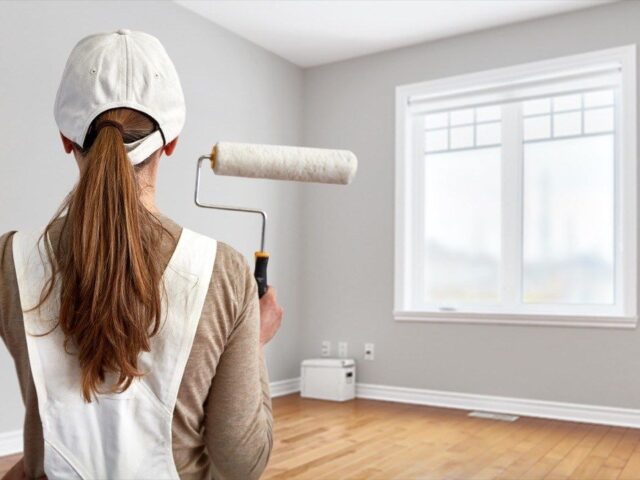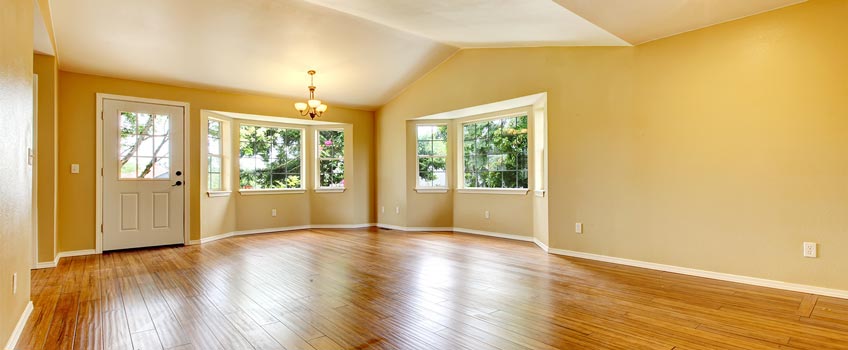Enhance Your Interior Decoration With Comprehensive Color Appointment
The combination of color consultation right into interior design presents a distinct opportunity to fine-tune and boost the visual and psychological resonance of a space. By engaging with an experienced shade consultant, you can navigate the complexities of color choice, making sure that your selections not just complement architectural features however additionally resonate with personal design and emotional influence.
Advantages of Shade Appointment

Furthermore, shade consultation aids in making the most of all-natural light and optimizing spatial understanding. Lighter hues can make an area appear more large, while darker shades produce an intimate setting. Cleveland Metro Painting Specialists. This calculated application of shade can considerably influence the general setting of any indoor room
Additionally, specialist experts have a detailed understanding of existing patterns and ageless classics, making certain that the picked shades will stay attractive gradually. This foresight can save clients from costly redesigns in the future. Shade examination equips customers by offering them with a clear vision and direction, cultivating self-confidence in their layout options and ultimately leading to a more effective and gratifying interior layout outcome.
Recognizing Color Psychology
The significance of color psychology in interior decoration can not be overstated, as it digs right into the psychological and psychological results that various colors can evoke in individuals. Colors can influence state of mind, habits, and even performance, making them a critical consideration in any style job.
As an example, warm shades such as red, orange, and yellow are commonly related to power and heat. They can boost feelings of exhilaration and comfort, making them suitable for social spaces like living kitchens or spaces. On the other hand, awesome shades like blue, eco-friendly, and purple tend to evoke calmness and serenity, making them ideal for bed rooms or reflection locations.
Additionally, making use of neutral tones can develop a balanced atmosphere by enabling the bolder colors to stand out without frustrating the detects. Understanding these psychological impacts enables developers to develop rooms that not only look cosmetically pleasing however also advertise emotional well-being.
Incorporating shade psychology right into interior decoration includes a thoughtful option of colors customized to the intended feature of each space, inevitably improving the total experience for its residents. This understanding is essential for accomplishing a unified and practical indoor setting.
The Color Wheel Clarified
Comprehending the connections in between shades is crucial for efficient indoor layout, and the color wheel functions as a valuable tool in this process. The color wheel, developed by Isaac Newton in the 17th century, illustrates the range of shades set up in a circular style. It comprises key colors-- red, blue, and yellow-- that can not be created by blending other shades. Additional colors, created by incorporating main colors, consist of green, orange, and purple. Tertiary shades arise from mixing a primary and a secondary color, causing shades such as red-orange and blue-green.
The shade wheel helps developers comprehend the connections between colors, consisting of complementary, analogous, and triadic plans. Corresponding colors, positioned opposite each various other on the wheel, produce lively contrasts that can invigorate a room.
Making use of the shade wheel in interior design not only enhances aesthetic appeal but also evokes particular emotions and environments, making it an essential referral for shade appointment. Understanding these connections eventually encourages developers to produce important site rooms that are both visually exciting and functional.
Picking the Right Palette
Commonly, selecting the appropriate palette is a definitive consider attaining a successful interior decoration task. An appropriate color design can link an area, improve its features, and stimulate preferred emotions. To begin, consider the objective of the area. Various rooms serve diverse functions and call for palettes that show their intended usage; for instance, tranquil shades such as soft blues or environment-friendlies function well in bedrooms, advertising leisure.
Following, take into consideration the all-natural light offered. Light can dramatically modify how shades show up, so it is vital to evaluate the room at different times of the day. Additionally, think about existing architectural aspects and furnishings. A harmonious palette should enhance these helpful hints attributes, producing a cohesive look throughout the space.
When selecting colors, utilize the 60-30-10 policy, which suggests that 60% of the area need to be a leading color, 30% an additional shade, and 10% an accent shade. This proportion makes certain equilibrium and aesthetic passion (Cleveland Metro Painting Specialists). Finally, sample colors on the walls before devoting, as this permits you to see just how the shades engage with one another and the general setting they develop in your interior decoration job.
Collaborating With a Color Expert

When dealing with a shade specialist, the procedure commonly begins with a preliminary appointment. During this conference, you'll discuss your vision, preferences, and the existing aspects in your area. The professional will examine your demands and may recommend certain shade palettes that straighten with your objectives.
After establishing a direction, the professional will certainly offer samples and visual aids to assist you imagine the recommended shade plans. This action is critical, as shades can show up differently under differing lights conditions.
Additionally, a color specialist can guide you in picking complementary furnishings, art work, and accessories to integrate with your selected scheme. By working together closely, you can attain a refined visual that raises your insides and produces an inviting ambience. Ultimately, the competence of a color expert can considerably enhance the general effect of your layout job.
Conclusion
In summary, thorough color consultation serves as a vital tool for enhancing interior decoration. By leveraging expert expertise of click resources shade psychology and spatial dynamics, a tailored shade scheme can be established to evoke specific feelings and create an unified environment. This critical technique not only cultivates a cohesive style narrative yet also reduces the risk of pricey redesigns. Inevitably, involving with a color expert makes sure an informed and cosmetically pleasing result, raising the total experience of the area.
By engaging with an experienced color professional, you can browse the complexities of color selection, guaranteeing that your choices not just enhance building functions yet additionally reverberate with personal style and emotional impact. It consists of key colors-- red, blue, and yellow-- that can not be developed by mixing various other colors.The shade wheel helps designers realize the relationships between colors, consisting of corresponding, similar, and triadic schemes.When selecting shades, use the 60-30-10 guideline, which suggests that 60% of the space should be a leading color, 30% an additional color, and 10% an accent color. By leveraging expert expertise of color psychology and spatial dynamics, a tailored color combination can be established to stimulate specific feelings and create an unified environment.